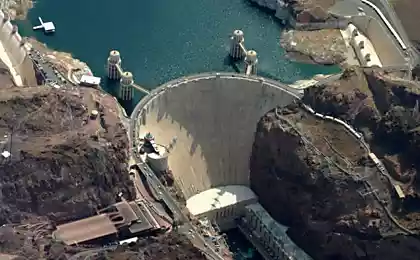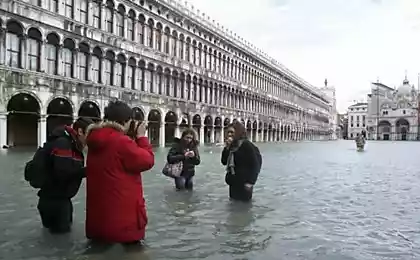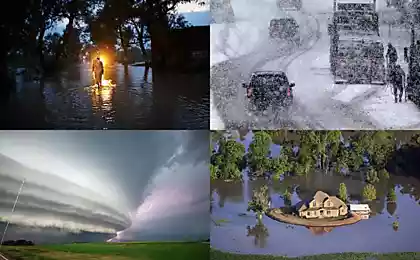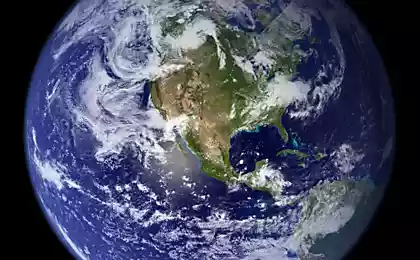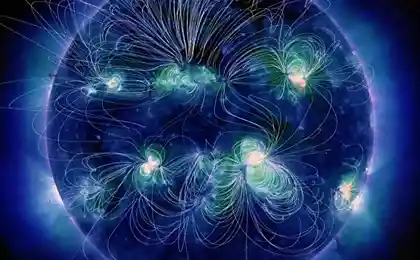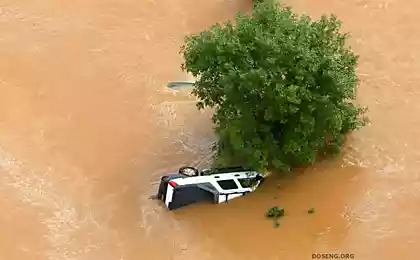791
The future of land - flood
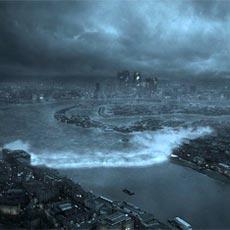
Climate change, global warming and the associated potential natural disasters - more often we hear the arguments on this subject, and, unfortunately, not always from the experts. Moreover, on the causes and consequences of climate mutations, there are a variety of points of view, including those directly conflicting. However, not all so simple. The opinion we are asked to give a professor of the Institute of Oceanology of the Russian Academy of Sciences Sergei Konstantinovich Guleva, who believes that the climate is changing on a warmer.
Will there come a day after
The most amazing thing is that even diametrically opposed views have the right to exist as any evaluation depends on the interpretation of the data and the time scale within which discusses weather fluctuations. Some scientists, for example, working with paleoclimatic data, argues that there comes a gradual cooling. And they're right - the last 500 million. Years actually observed a similar trend, as evidenced by the geological data. It is possible that someday the world will reign eternal winter. The sun, too, in his time to cool down, and then all of our galaxy, but it will happen over millions or even billions of years. However, humanity today is unlikely to have to worry about events that are likely to occur later whole eons. We are now more interested in the immediate future - a few tens or hundreds of years.
According to the observations, for the entire twentieth century. global warming was less than one degree, and the thermometer continues to grow steadily, even at a higher rate at the end of XX - beginning of XXI century. Of course, some changes are obvious and inevitable, and yet we are unlikely to face a real embodiment of Hollywood cinematic nightmares similar to those shown in the film "The Day After Tomorrow." At least in the next hundred years or catastrophic melting of glaciers or the Flood is not expected. Nevertheless, there is a possibility of other, less noticeable changes. And the fact that they are accompanied by devastating disasters, does not mean that the processes themselves and their potential consequences may be for the time being neglected. Large or small variations in climate and climatic factors, they need to learn today.
Caught cyclones
One of the most urgent tasks is the study of the trajectories and the intensity of mid-latitude cyclones. The trajectories of the Atlantic cyclones have changed their destinations over Europe, and do not intend to stop there. Air masses move in the atmosphere due to differential temperature and pressure in various parts of the globe: the air moves from warm to cold areas, ie in the direction of least pressure. However, due to the Earth's rotation and the direction of the associated processes of air masses is changing, it is virtually the line separating warm and cold zones. Even 20-30 years ago, the North Atlantic cyclones came from the ocean through the north of the UK and Scandinavia to the Arctic, and now their path lies to the south and runs through the temperate latitudes of Central Europe. The fact that the planet's surface is heated unevenly in the northern regions the temperature has risen more than in the south (this happens because of the heterogeneity of the atmosphere, the dynamics of the air and because cold air is heated slightly faster warm). The result moved the boundary of warm and cold areas. Changes in storm tracks due to the uneven surface temperature changes affecting the deviation storm tracks towards the poles. Most likely, those rain that fell earlier in Scandinavia, the North of England and in the Arctic Ocean is now "spilled" over Europe and the European part of Russia.
Diverted cyclones south threatens primarily the increase in the number of extreme rainfall and floods. The paradox is that, in general, fewer rainy days, but the intensity of rainfall has increased significantly, ie a certain number of them are now falling, for example, not 20, and 15 days in the season. Furthermore, it increased and Intensity cyclones and their speed. If over the Atlantic Ocean born the same number of cyclones, then into Europe comes over them and they become stronger, periodically flooding the European continent. For example not far to seek: heavy snowfall last winter was not an anomaly, it was an unusual amount of snow has fallen on some days. Why change the character of precipitation? Scientists have not yet come to a consensus, however, apparently, it can be associated with the intensity of cyclones and the other (with respect to high latitudes) the behavior of cyclones over Europe.
Cold or hot?
Researchers around the world are racking their brains over the question about the causes of rising temperatures and forecasts for the future. On this point there are different points of view, but more often the cause of global warming, congestion in the air is considered a significant amount of carbon dioxide and other climate-active trace gases. Modern computer technologies allow to create different climate models. In order to understand how true one or the other of them, scientists usually recreate using them known climatic conditions, for example, the beginning of the twentieth century., And then the same method simulate present and future, which are characterized, for example, a doubling of carbon dioxide in the atmosphere . Studies show that the climate of the first third of the last century can be reproduced without the atmospheric content of carbon dioxide and other gases, and modern - no longer exists. These findings suggest that carbon dioxide - very important and even determining element forming the current climate.
Caught tsiklonovKakoy the weather will be in the future? Most likely, in the coming decades the climate in Europe will gradually lose its continental character, that is summer in Central and Eastern Europe will be colder, winter, on the contrary, more soft and moist. The reason for this - shift storm tracks, which were discussed above. They will bring cloudy weather and rain, and quite strong. In this connection, it will increase the risk of flooding, particularly in Central and Eastern Europe. In addition, the amount of water in the oceans gradually increases, however, not so much because of the melting of glaciers as a result of its heating. According to the laws of physics, the warmer the water, the greater its volume. Accordingly, as heating the water level in the oceans rises slightly, which in theory could lead to flooding of low-lying areas. In other parts of the globe, particularly in the western parts of North America, climate change will be determined by changes in the frequency and intensity of El Niño - a phenomenon largely affects the circulation in the middle latitudes of the Pacific Ocean. He, through complex relationships can influence the tropics of Asia and Africa.
The Kyoto Protocol
Changes in the Earth's climate now bothering everyone - from environmentalists and politicians to gardeners scratching their heads over whether they will in twenty years still grow in the suburban garden strawberries or have to move to watermelons. This, of course, a joke. But there is a real opportunity to control "the weather at home»?
There is much talk about the Kyoto Protocol, ostensibly designed to prevent global warming. However, this document is largely irrelevant to the climate has not. The problem of ratification of the protocol - a purely political one. It is a fact that reflects the complexity of our world and the science of climate has nothing to do. Another thing that is very dangerous trend are trying to fine-tune the science under those or other state interests. Worst of all is that both supporters and opponents of the protocol do not stop to demand from researchers depending on the political situation salvific evidence or, on the contrary, the evils of the conclusions of the Kyoto Protocol on global climate. And even worse, that they are pseudoscientists who undertake such work.
One thing is clear: in its present form, the Kyoto agreement will not change anything. Reducing greenhouse gas emissions by 10% over the next 5-7 years is not enough to stop or significantly slow the warming. Even if now completely stop all emissions into the atmosphere, the temperature rise will continue for fifty years: too much carbon dioxide accumulated in the atmosphere. It must be admitted that the notorious 10% - a compromise, the first step that gives hope for the adoption of more severe measures in the future. That is, apparently, the main feature of the Kyoto Protocol target - try within a relatively small shares of the different countries to join efforts in the control of global warming and develop the economic and legal mechanisms of such control. No more serious measures that would allow a significant impact on climate, scientists still can not offer.



